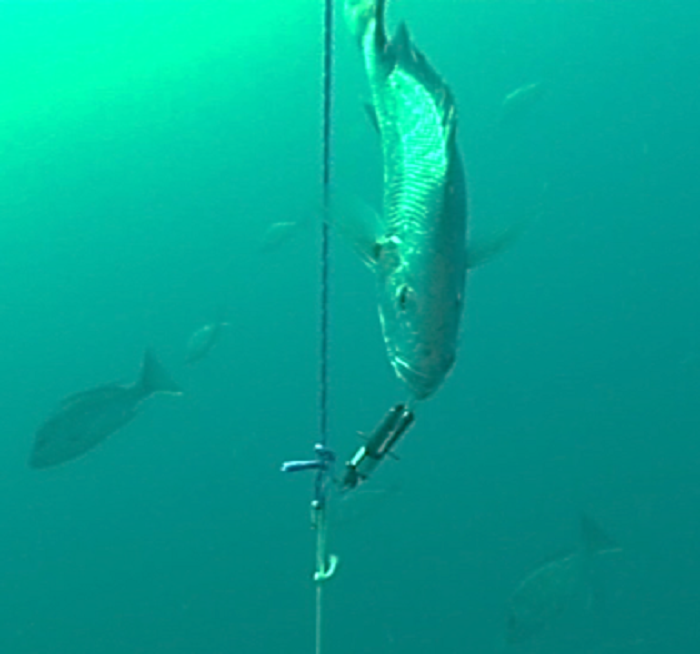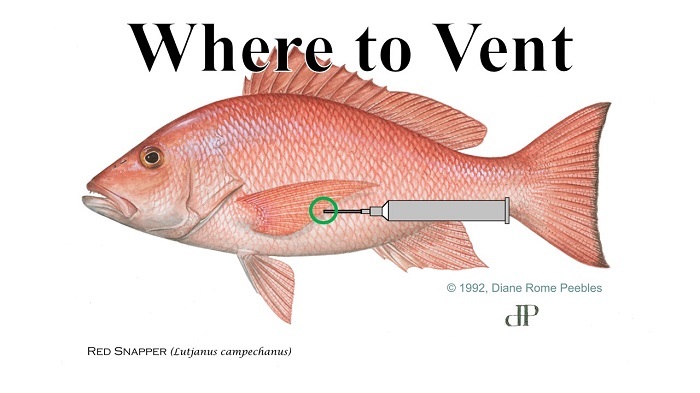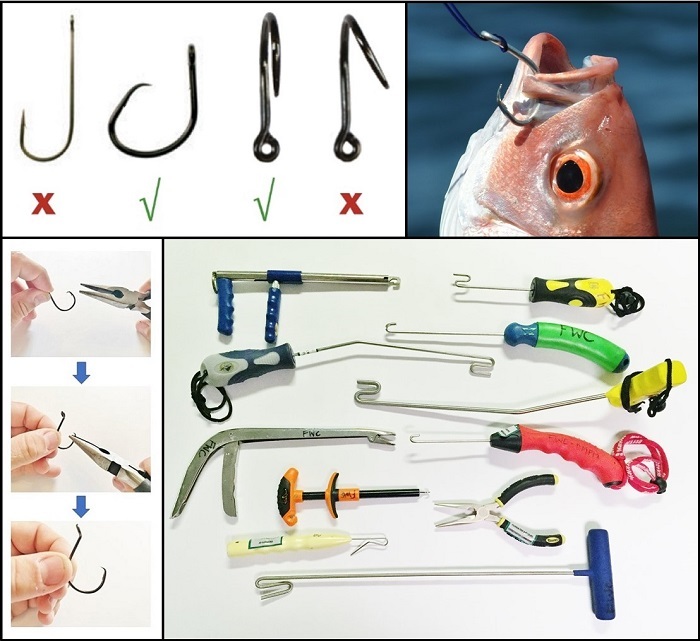When releasing deep-water fish, the right tools mean everything
Florida Fish & Wildlife Conservation Commission sent this bulletin at 06/08/2021 11:34 AM EDT
(Having trouble viewing this email? View it as a Web page.)
June 8, 2021
Suggested Tweet: When releasing deep-water fish, the right tools mean everything @MyFWC: https://content.govdelivery.com/accounts/FLFFWCC/bulletins/2e31bfe #Florida #fishing
Descending Devices Video: https://www.youtube.com/watch?v=8wDsrzlh83I
When releasing deep-water fish, the right tools mean everything
Will you be fishing for snapper or grouper on your next fishing trip? Continue your role as a conservationist by paying close attention to signs of barotrauma and being prepared to respond. Barotrauma is a condition seen in many fish caught at depths greater than 50 feet and is caused by pressure changes leading to an expansion of gases in the swim bladder. It is important to treat barotrauma in fish you do not intend to keep. Signs of barotrauma include the stomach coming out of the mouth, bloated belly, distended intestines and bulging eyes.

Signs of barotrauma include the stomach coming out of the mouth, bloated belly, distended intestines and bulging eyes. Photos by Florida Sea Grant.
Barotrauma can cause damage to internal organs and be fatal unless appropriate steps are taken to mitigate its effects. It is important to know in advance what tools are available and how to use them to help fish return to the bottom and increase their chances of survival.
Descending devices take fish back down to a depth where increased pressure from the water will recompress swim bladder gases. They fall into three categories: mouth clamps, inverted hooks and fish elevators. With proper set-up and practice, descending devices can be easy to use and make a big impact on the survival of released fish. Learn more about descending devices and how to use them at MyFWC.com/SaltwaterFishing by clicking on the “Descending Devices” playlist.

Descending devices return fish to a depth where gases in the swim bladder can recompress.
Venting tools are sharpened, hollow instruments that treat barotrauma by releasing expanded gas from the swim bladder, enabling fish to swim back down to depth.
REMINDER: items such as fillet knives, ice picks, screwdrivers and gaffs are not venting tools and should never be used to vent a fish. Venting a fish incorrectly can cause more harm than good.
To properly vent, lay the fish on its side (on a cool, wet surface). Venting tools should be inserted 1-2 inches behind the base of the pectoral fin, under a scale at a 45-degree angle, just deep enough to release trapped gasses. Never insert venting tools into a fish’s belly, back or stomach that may be protruding from the mouth. Learn how to vent properly by visiting YouTube.com/watch?v=jhkzv1_2Bpc.

Venting tools should be inserted 1-2 inches behind the base of the pectoral fin, under a scale at a 45-degree angle, just deep enough to release trapped gasses.
Descending devices and venting tools should only be used when fish show one or more signs of barotrauma and cannot swim back down on their own. It is essential to work quickly when using these tools and return the fish to the water as soon as possible. Anglers should choose the device and method they are most comfortable with and that best fits the situation.
Anglers should also use proper gear when fishing for reef fish. Circle hook and/or dehooking tool requirements apply to anglers fishing for reef fish in Florida. Non-stainless steel, inline (non-offset) circle hooks with the barb crimped down often hook in the mouth rather than the gut, making it easier to release fish. Dehooking tools also help quickly release fish so you can get back to fishing for that big one in no time. Using the right tools and acting quickly will make a big difference in the survival of fish you release, ultimately helping to conserve Florida’s world-renowned fisheries for the future. For details about reef fish gear requirements for circle hooks and dehooking tools, visit MyFWC.com/Marine and click on “Recreational Regulations,” then click “Gear Rules” under the Reef Fish tab.

Non-stainless steel inline circle hooks with the barb crimped down (top photos) and dehooking tools (bottom-right photo) should be used to help quickly release fish and increase their chances of survival. Crimp the barb down on any hook to make the hook barbless (bottom-left photos).
To learn more about proper fish handling techniques, visit MyFWC.com/FishHandling. Check out our descending devices playlist to learn more about barotrauma, descending devices and venting tools. Visit our YouTube channel at MyFWC.com/SaltwaterFishing for more saltwater fishing how-to videos. For answers to questions, contact 850-487-0554 or Marine@MyFWC.com.

